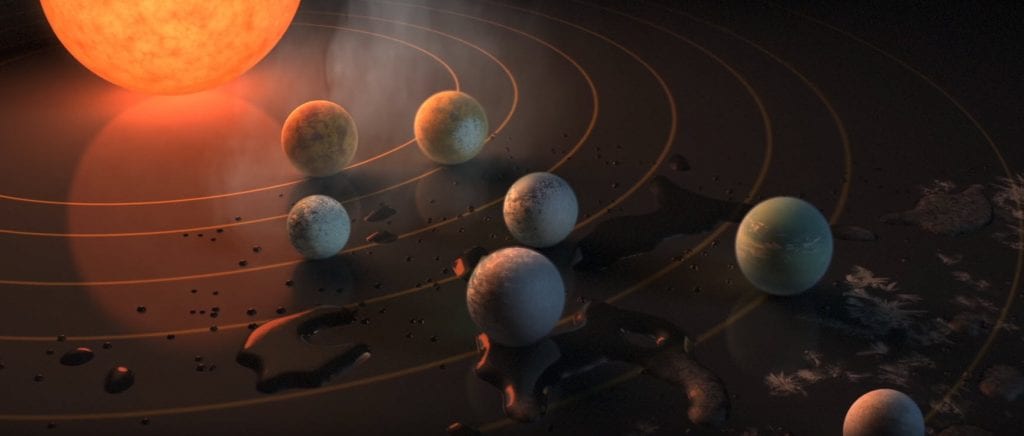
A team of scientists under the leadership of Michael Jijona from the Institute of technology and astrophysics at the University of Liege in Belgium made an unprecedented discovery around the star TRAPPIST-1 seven exoplanets (or planets orbiting other stars, not the Sun), on which the possible existence of liquid water, while the three planets, presumably, fit for life.
In connection with the scientific sensation of the National Board of the USA on Aeronautics and research of space administration (NASA) held on Wednesday a special press conference, and stated that the discovery is noteworthy because previously, around one star has never been recorded at the same time so habitable planets.
As noted by NASA, to identify objects managed with the help of the Spitzer spacecraft, which allows you to make observations in the infrared range. It is noted that the three closest to the star TRAPPIST-1 planets, presumably too hot for the existence of life, on the most far too cold. Thus, those three in the middle can be a habitable environment. Before, scientists believed that the aforesaid planetary system there are only three exoplanets and data about them was extremely small.
“We make a huge step forward, – said the head of the science Directorate, NASA Thomas Zurbuchen. – It (the opening) could be a significant step on the path to finding habitable environments are suitable for life”.
Single star TRAPPIST-1 in the constellation of Aquarius is relatively close to the Earth, its from our planet are separated, according to scientists, about 40 light-years, or 378 trillion km. meanwhile, responding to a question in the microblogging network Twitter on a press – conferences in a staff-apartment NASA scientists explained that the open star and the exoplanet – not the close “neighborhood” of our solar system.
The carried out observations allowed to determine the size and mass of planets and conclude that they all have rocky terrain. Other details, including confirmation of the fact that they have liquid water, remains to be seen.
The atmosphere and the sattelites
In the next five years, scientists plan to further study the atmosphere of exoplanets, said Nicole Lewis, a specialist research Institute space telescope in Baltimore, USA (Maryland). “We plan to make significant progress on this issue (the study of the atmospheres of planets) within five years. We expect to present the results of our research in early 2020-ies” she said.
Then the experts were also asked about whether the planets satellites, however, a clear answer has not sounded. “In accordance with our observations, they (exoplanets) have satellites. In addition, based on the theory, it is unlikely that planets at such small distance from the star, they can be. However, in the future we will be able to shed some light on this issue: perhaps they will be the satellites,” explained Zion.
Given the planets names?
Another burning issue was the naming of the planets open. As told by the Belgian, answering questions of users of social networks, the names to date, not invented, and yet they offered to call the world the letters of the alphabet in accordance with the remoteness of each from the star. “Actually, we have different options… but don’t think that’s the official name,” laughs Jian. “Today, let’s call them “b”, “C”, “d” (b, c, d) and so on,” he added.
In turn, Professor of planetwide and physics Massachusetts Institute of technology Sarah Seger explained that the issue of naming exoplanets in General is a pretty thorny issue. “Actually, we can’t just give the official names ekzoplaneta just as we give names to the asteroids. However this is something we may have to change,” she said.
Image credit: NASA
